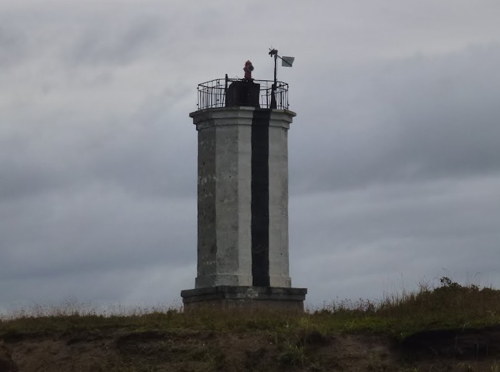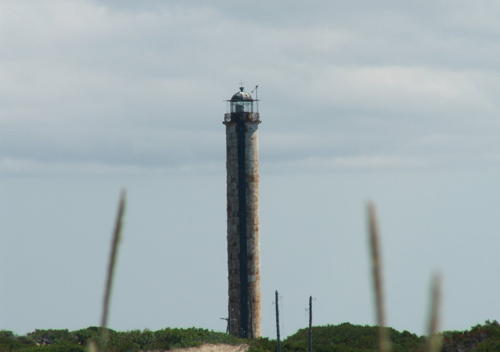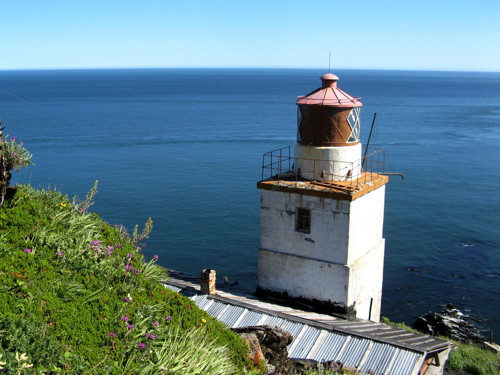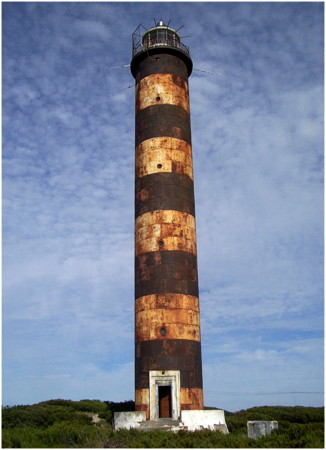Russia (Россия, Rossiya in Russian) is by far the world's largest country, spanning a little over 150° in longitude. It is organized as the Russian Federation (Rossiyskaya Federatsiya) with members known as federal subjects (sub'yekty federatsii). Russia is primarily a continental nation but it has important coastlines on the Baltic, Black, and Caspian Seas and very long coastlines on the Arctic Ocean and North Pacific Ocean. To guard these coasts it operates hundreds of lighthouses, many of them historic.
Sakhalin, located just off Russia's east coast, is the country's largest island, stretching 950 km (almost 600 mi) from north to south and separating the Sea of Japan to the southwest from the Sea of Okhotsk to the northeast. Sakhalin and the Kuril Islands together form an oblast (province), one of the members of the Russian Federation.
Both Japan and Russia became interested in annexing these territories during the mid 1800s. In 1875 the Treaty of St. Petersburg assigned Sakhalin to Russia and the Kurils to Japan, and within a few years Russia began building lighthouses in Sakhalin. In 1905, at the end of the Russo-Japanese War, Russia was obliged to cede the southern half of Sakhalin to Japan, the border being fixed at 50° north latitude. Russia took control of all of the island in 1945, near the end of World War II. Japan renounced its former claims to Sakhalin in the 1951 Treaty of San Francisco.
This page describes lighthouses in the northern half of the island, the region that has always been administered by Russia.
Sakhalin Island is divided into 14 districts and one independent city (Yuzhno-Sakhalinsk).
The Russian word for a lighthouse is mayak (маяк); ostrov is an island, poluostrov is a peninsula, kosa is a sandy spit, rif is a reef, mys is a cape, bukhta is a bay, zaliv is a larger bay or gulf, proliv is a strait, reka is a river, and gavan' is a harbor.
Russian lighthouses are owned by the Russian Navy and maintained by the Office of Navigation and Oceanography (Управление навигации и океанографии).
Special thanks to Alexander Barkov for the use of his photos on this page.
ARLHS numbers are from the ARLHS World List of Lights. Admiralty numbers are from volume M of the Admiralty List of Lights & Fog Signals. U.S. NGA List numbers are from Publication 112.
- General Sources
- Sakhalin Lighthouses
- Overview (in Russian) and selected photos by Igor Samarin of the Sakhalin Regional Museum in Yuzhno-Sakhalinsk.
- Lighthouses of the USSR - Far Eastern Seas
- This Russian-language reference provides valuable historical information.
- Russian Lighthouse Society
- Photos and information on many lighthouses.
- World of Lighthouses - Far East of Russia
- Photos available from Lightphotos.net.
- Online List of Lights - Russia - Ostrov Sakhalin
- Photos by various photographers posted by Alexander Trabas.
- Idilesom.com - Sakhalin - Lighthouses
- Photos collected by a tourist development site.
- Russische Leuchttürme auf historischen Postkarten
- Postcard views of historic Russian lighthouses posted by Klaus Huelse.
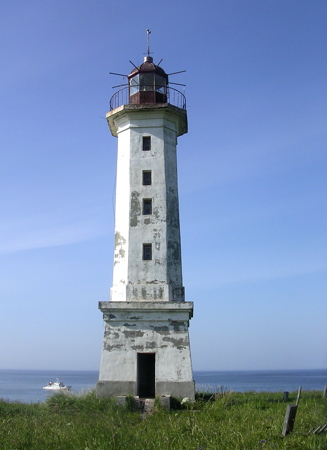
Mys Marii Light, Sea of Okhotsk, July 2008
ex-Panoramio photo copyright Alexander Barkov
used by permission

